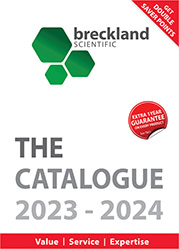| |||||||||||||||||||||||||||||||||||||
Power SuppliesWhat do lab power supply descriptions actually mean? When deciding on which power supply to choose, from a bewildering number of options, most people compare specification and price. Below is a list of commonly used terms to help you through the minefield. All comments refer to direct current (d.c) unless otherwise specified. Power supplies convert mains a.c down to a lower voltage a.c. which is then mainly converted to d.c using a rectification circuit. Unregulated output This is the most commonly available type of power supply. An unregulated supply's output voltage will vary somewhat according to the load current drawn. For example a PSU is rated at 2-12V, 5A.d.c This means that when attempting to deliver [12V] into a 2A load the voltage will be significantly higher (about 14-15V). It is always advisable to use a voltmeter across the output so that you know what you are getting. FWR or HWR? This stands for full wave Rectified or Half wave Rectified output. It is always Advisable to chose FWR as the output is less 'lumpy' Smoothed or Unsmoothed? Looking at FWR, which is by far the most common type. The a.c is converted to full wave d.c. which gives an output of sinusoidal lumps at a frequency of 100Hz. This is okay for general work such as illuminating lamps etc. but wreaks havoc on most electronic circuitry. This is known as an unsmoothed output. The amount of power delivered is equivalent to the area under the humps. Working it out mathematically, the equivalent voltage will be the peak voltage divided by root 2 (1.414) There are 2 main types of smoothing - capacitor smoothing and LCR smoothing. The simplest type simply uses a capacitor smoothing across the output terminals which smooths out the lumps. This has the effect of raising the output voltage by a factor of 1.414. It is not perfect (nothing ever is), and the output is not perfectly smooth. It gives rise to a small amount of ripple. A much more sophisticated circuit employs inductors, capacitors and resistors in a network (LCR) which gives a much lower ripple content - i.e. a smoother output. Regulated Output Regulated overcomes the problems associated with the voltage output varying with current draw. A ideal regulated output will keep the voltage constant no matter what the current draw (within the specified current limit of a supply). There are two main types of regulator circuit, linear and switched mode. The linear regulator usually comes in a three pin package which must be attached to a large heatsink to dissipate the heat generated. The switch mode circuitry is become much more common as it incorporates LCR smoothing and does not generate anywhere near as much heat. You will often see the word 'stabilised' used as an alternative term to 'regulated'. Generally SMPSUs (switched mode power supply units) offer much better performance, lower ripple and better regulation than linear supplies. Ripple Basically you should aim for the lowest available ripple. Generally the lower the ripple, the smoother the output but this adds to the cost. A.C Power Supplies A.C supplies are usually incorporated within an a.c/d.c supply, either with fixed output voltages or continuously variable output. The vast majority of a.c. supplies are unregulated as a.c. regulation is very expensive and, for the most part unnecessary. |
| ||||||||||||||||||||||||||||||||||||
.jpg) Tel No: 01785 227227 Lines open: 9am - 5pm Email: sales@brecklandscientific.co.uk |





